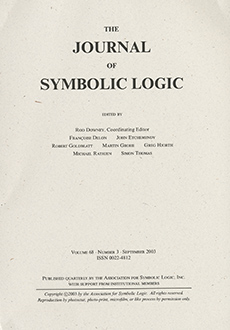Abstract
The half-open real unit interval $(0,1]$ is closed under the ordinary multiplication and its residuum. The corresponding infinite-valued propositional logic has as its equivalent algebraic semantics the equational class of cancellative hoops. Fixing a strong unit in a cancellative hoop—equivalently, in the enveloping lattice-ordered abelian group—amounts to fixing a gauge scale for falsity. In this paper we show that any strong unit in a finitely presented cancellative hoop $H$ induces naturally (i.e., in a representation-independent way) an automorphism-invariant positive normalized linear functional on $H$. Since $H$ is representable as a uniformly dense set of continuous functions on its maximal spectrum, such functionals—in this context usually called states—amount to automorphism-invariant finite Borel measures on the spectrum. Different choices for the unit may be algebraically unrelated (e.g., they may lie in different orbits under the automorphism group of $H$), but our second main result shows that the corresponding measures are always absolutely continuous w.r.t. each other, and provides an explicit expression for the reciprocal density.
Citation
Giovanni Panti. Davide Ravotti. "Measures induced by units." J. Symbolic Logic 78 (3) 886 - 910, September 2013. https://doi.org/10.2178/jsl.7803100
Information





